Curated by Natasha Ginwala , Colomboscope.
In this exhibition a presentation about the project and ongoing research on the textile tradition was shown to the audience. Aftermath a workshop of embroidery making was conducted at the premises.
Introduction to KAGUL
Southern Sri Lankan traditional artistic curative practice contains an amalgamation of numerous artistic practices. A branch of the performing tradition includes textile and costume making diversified regionally in the form of ritualistic “thovil” or exorcist practices to other forms of “shanthikarma” or curative variants containing diverse attire aesthetics ( distinctive regional branches of the performing arts prevailed in the southern parts of Sri Lanka, which are Bentara, Matara, raigama )
The name “ KAGUL” is the ornate headgear worn by the head healer or the “ Adura”(Sinhala term for the healer). The performers wear this symbolic headdress as a crown that provides a form of elevation from their social upbringing as a marginalized lower caste body.
KAGUL is a platform that aims to rejuvenate a dying traditional textile practice, bringing its talismanic form and its historical and cultural representations to contemporary times. Aspects of its timeless approaches are to be redesigned, revoke new nuances in approaching the tradition, and find deeper roots of its existence. To create a discourse by analyzing and decoding the existence of its gendered cultural identity, representation, and historiography through the textile tradition.
Workshop : Learning the talismanic pattern making on ritualistic costumes.
Time duration : Two hours
Materials : variations of colored Beads, needles, cloth fitted to a circular shape, scissors, trimmers, black and white printed handouts.
Creative team from KAGUL : Dewinda Jayasinghe, Kumudu Ranasighe , Prathi, collaborative partner Dinushi Halloluwa ( visited to explain furthermore about ‘Nachchi’ or queer community part of these ritualistic performances)
We will be conducting a workshop on the following key points.
1: Embroidery techniques : Way of attaching beads in this traditional textile making process is completely different. Our first attempt is to introduce the beaded stitching process.
2: Introducing some of the traditional patterns and their meanings: We will print a few copies as handouts of some of these cosmic patterns and meanings.
3: Making a small soft sculpture by deforming a round shape.
Here we are introducing a circular shape and allowing people to change the shape by adding any beads they want. ( To enable creative ways to play, deconstruct and reconstruct a form into a sculptural form).
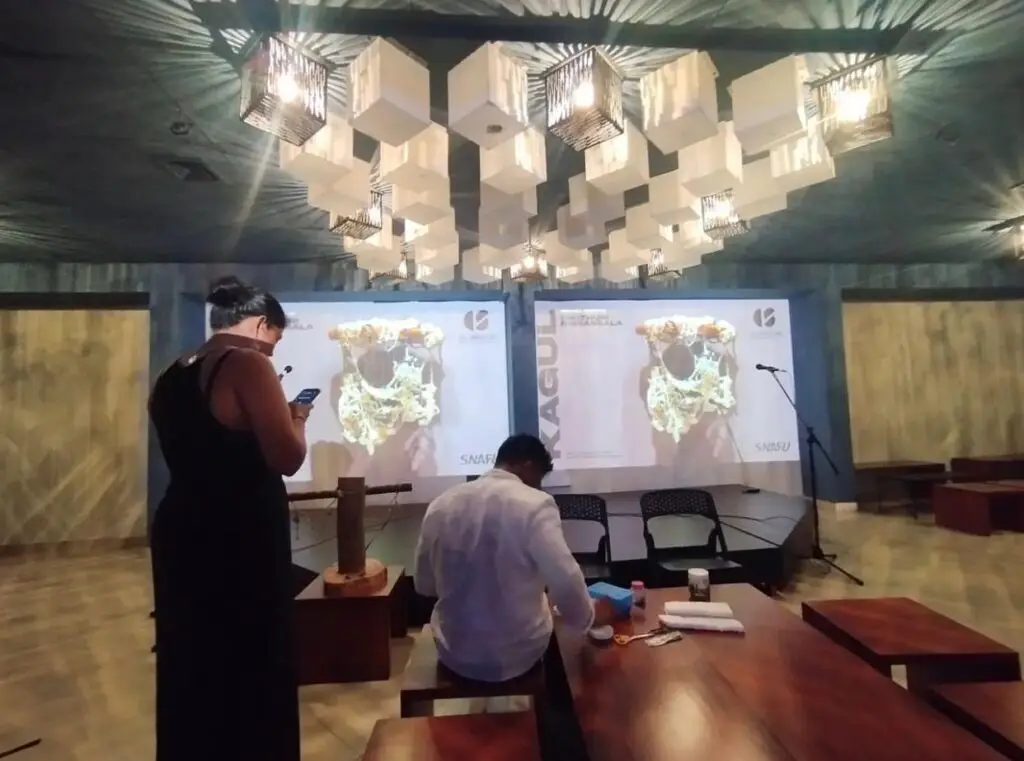
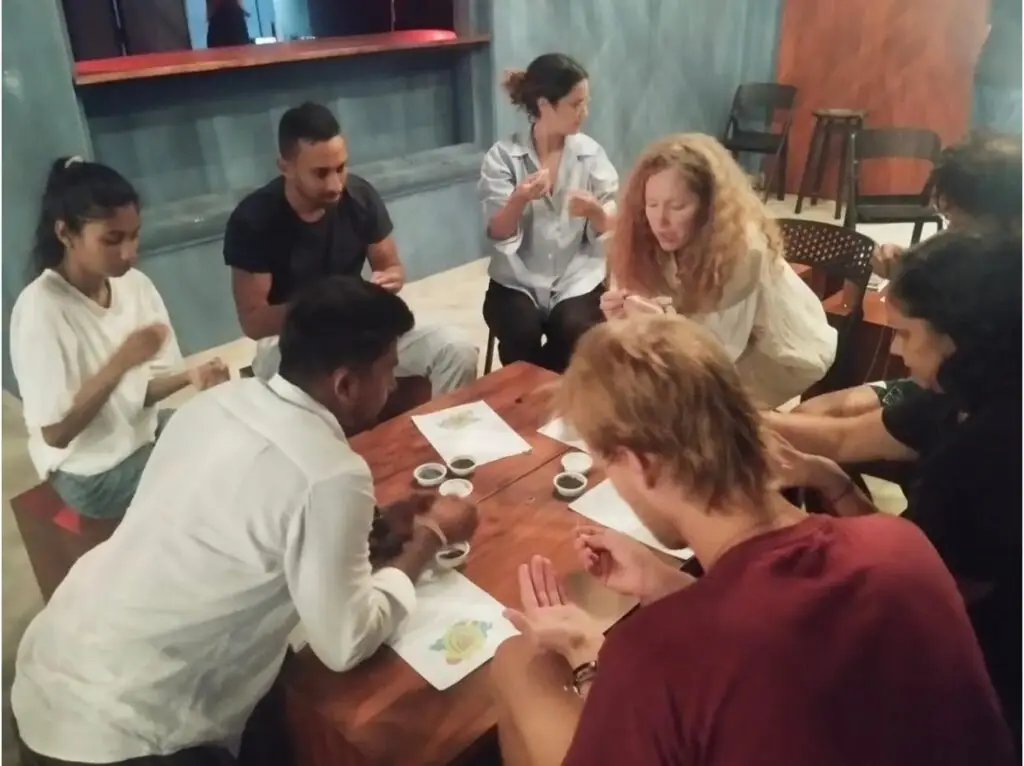
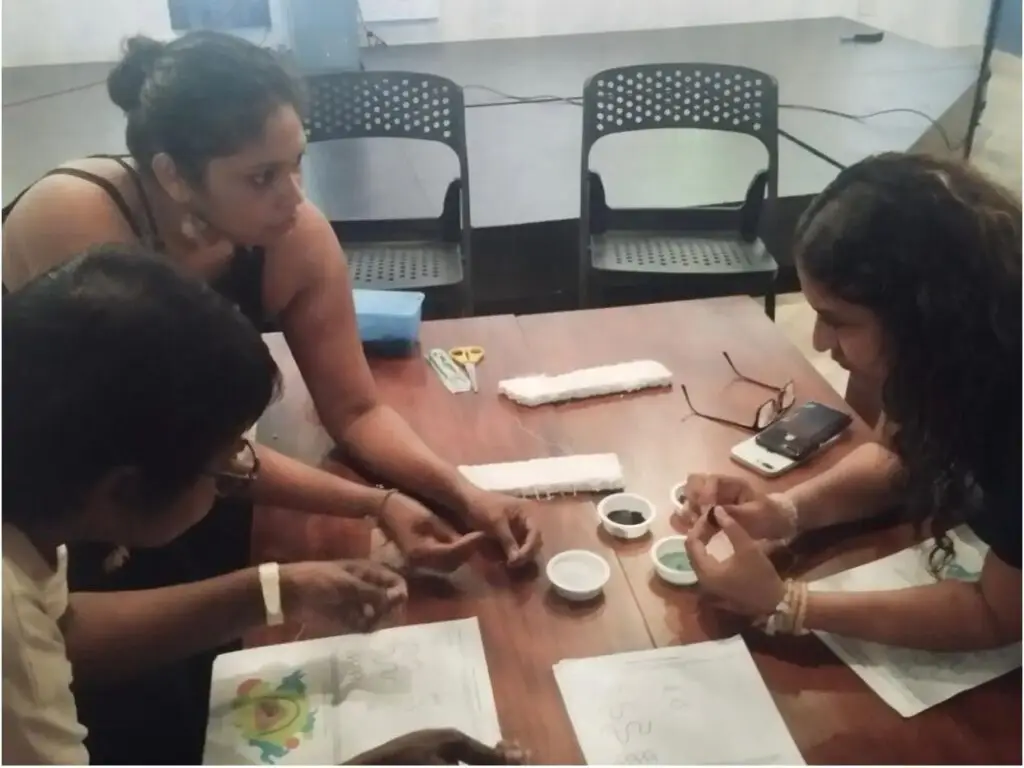
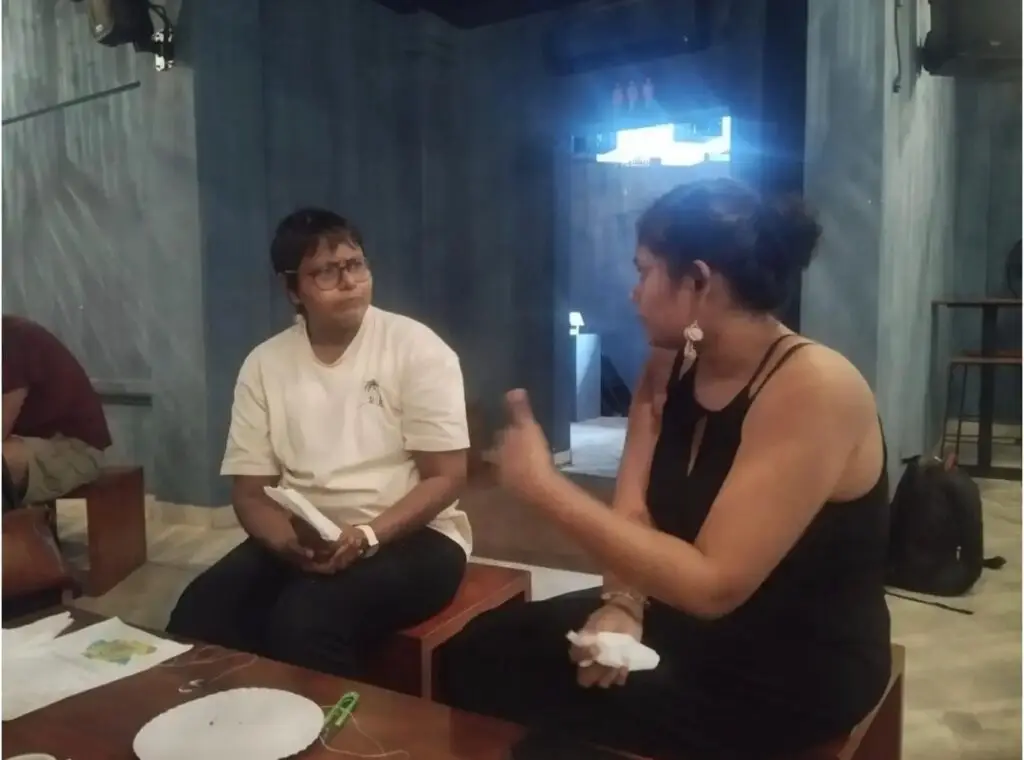
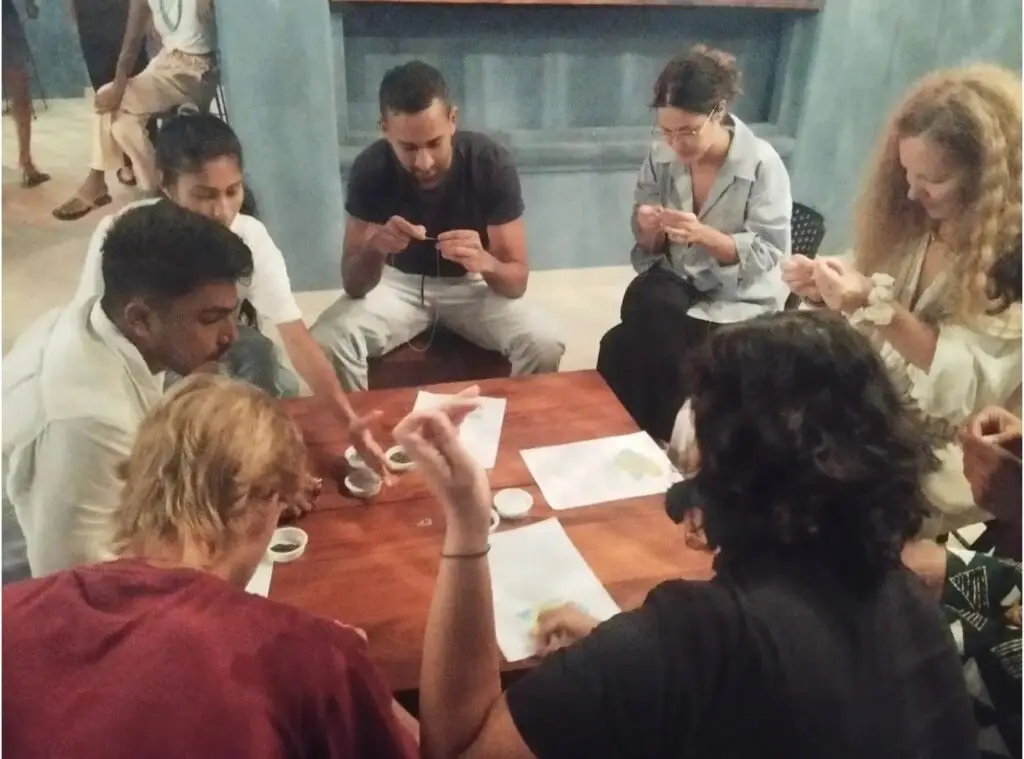
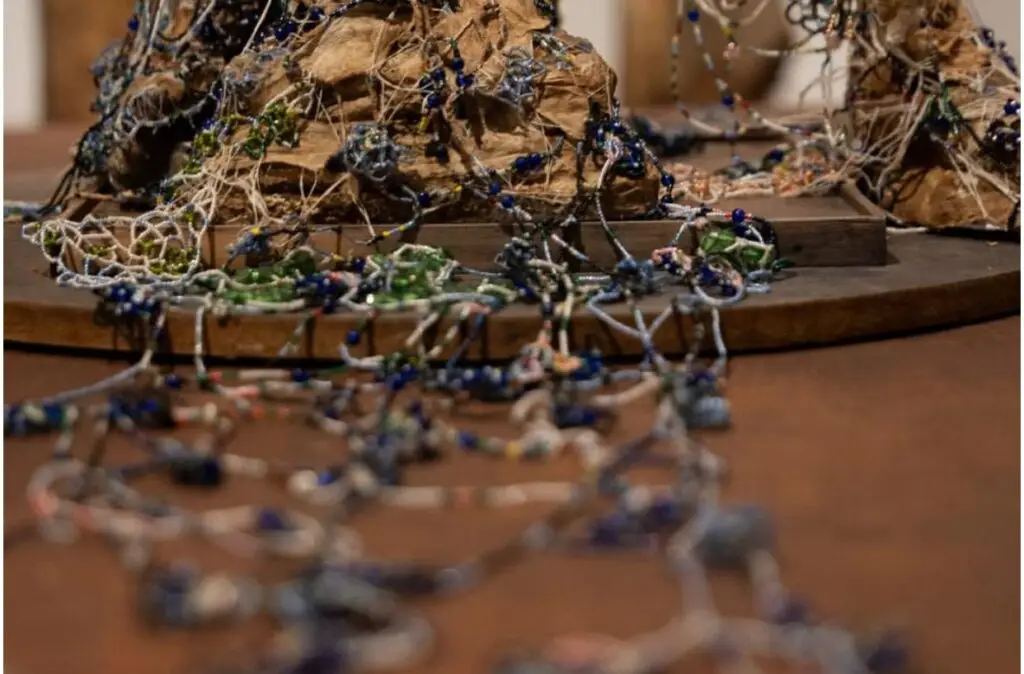
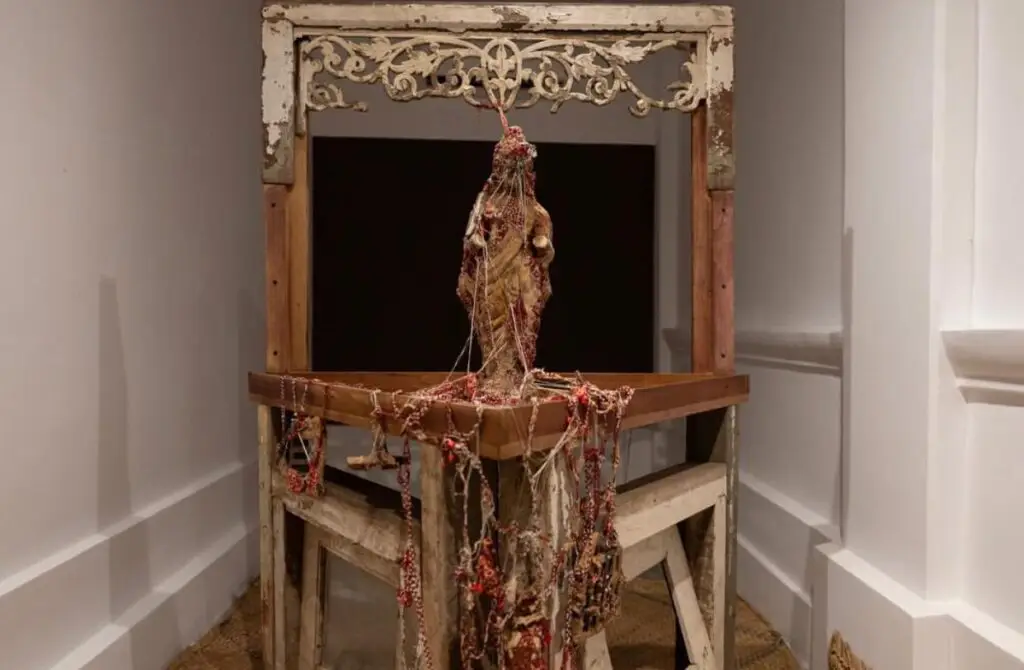
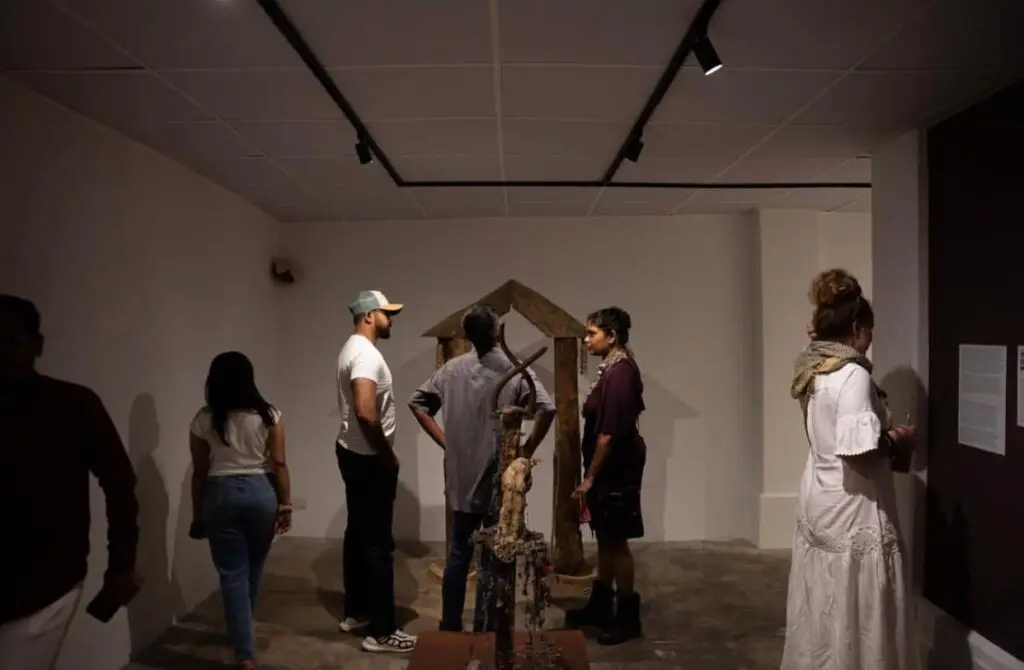
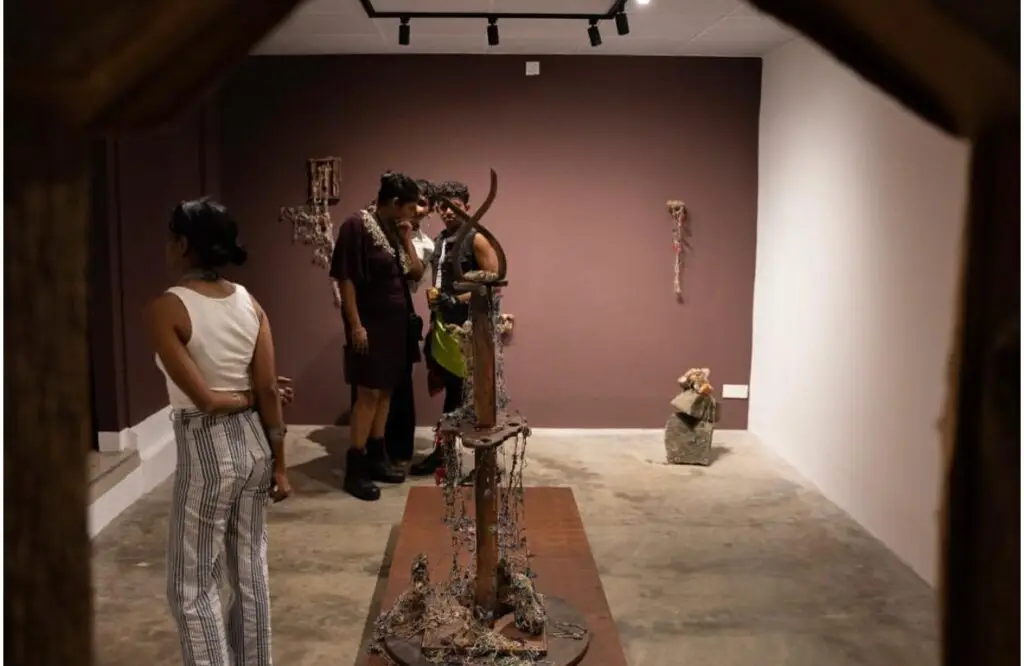
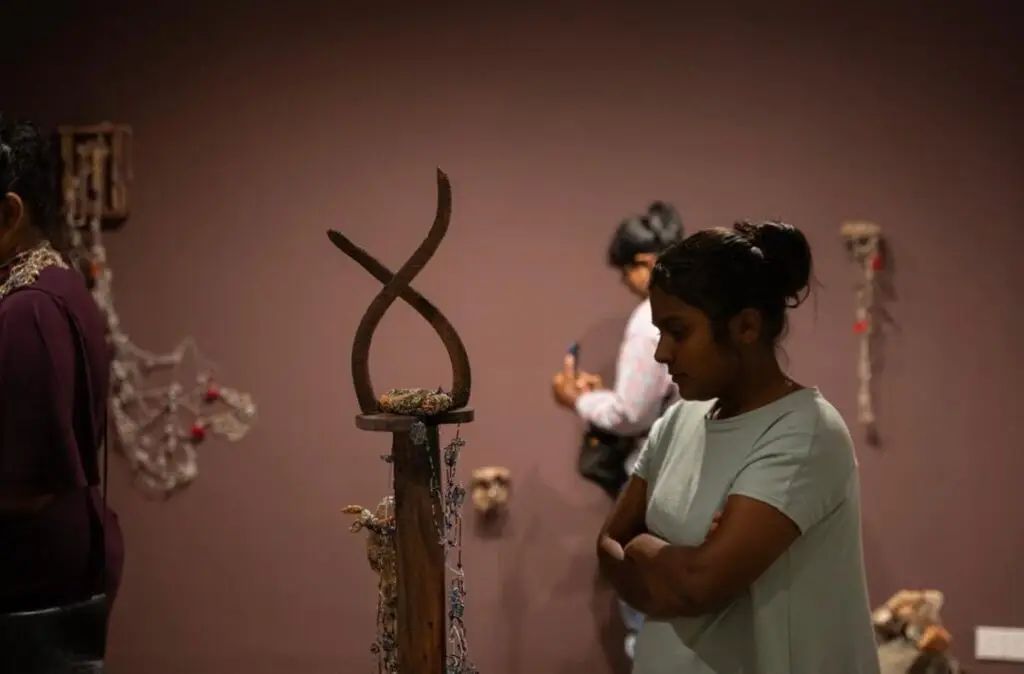
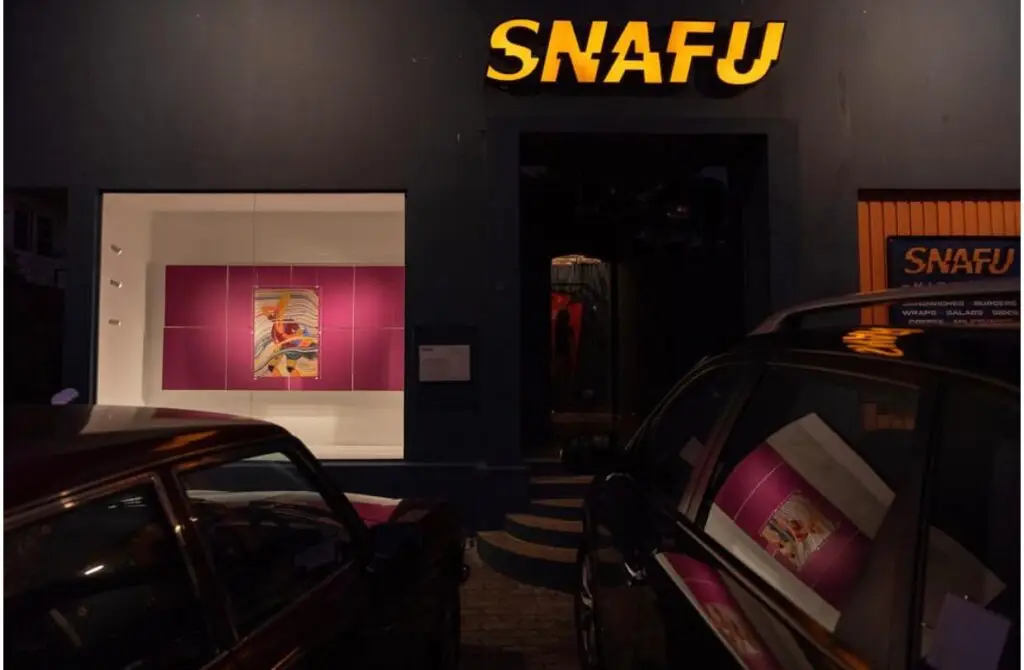
In the first dual artistic presentation at @snafuproject artists Rajni Perera and Chathuri Nissansala’s projects converge to reflect on destructive developmental agendas and climate emergency while drafting futurist visions that approach the island’s rituals and artisanal legacies through ancestral recall, queer worldmaking and material subversion.
Perera’s special edition multiple Storm foregrounds a hybrid character braving a toxic horizon and human follies while Nissansala’s in-situ sculptural installation from the durational series This Land is Not Mine, Mother! shores up visions from the residual fragments of Colombo’s historic de Soysa building, found statues, and traditional beaded ephemera. Both artists coming from different generations challenge patriarchal and majoritarian mythological foundations while committing to memory keeping and collective storytelling, confronting monstrosity and sustaining collective dreaming amidst rampant erasure, displacement, and diasporic belonging. Their aesthetics reclaim power from hegemonic sacred spheres, turning to the sovereign agents of past and future worlds.
Curated by Natasha Ginwala @snafuproject @chathurinissansala @rajniperera @foldmedia @natasha_ginwala @asvajit @nigelpereralk @sweemu6